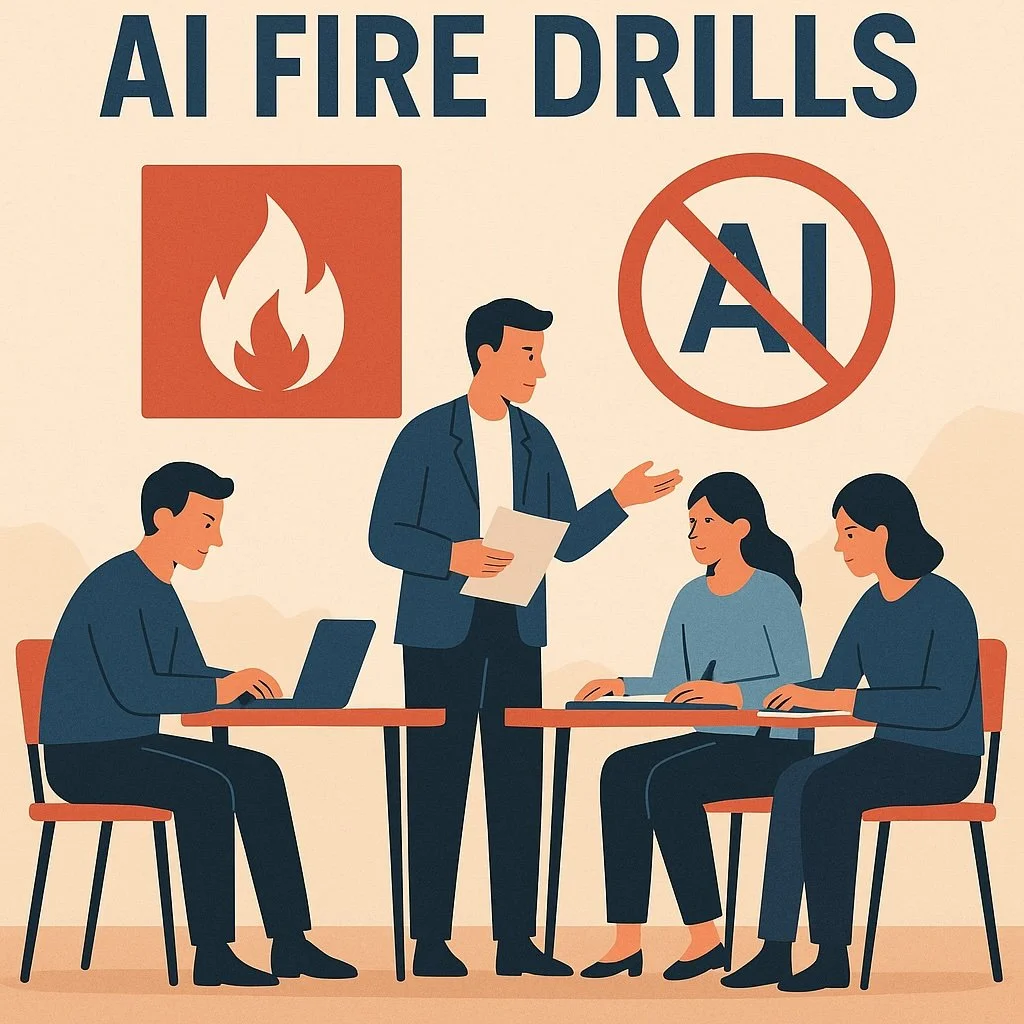AI Fire Drills: How to Assess Preparedness and Efficacy
What happens when the AI goes down?
It’s a question more companies need to be asking and acting on.
Just as we rehearse fire drills or business continuity exercises for natural disasters and cyber threats, we need to begin staging AI fire drills. Structured, time-bound simulations where employees work without artificial intelligence, and perhaps even without the internet.
These exercises aren’t about technophobia. They’re about preparedness, clarity, and resilience. They’re about maintaining human-centred readiness in a digital age where we rely more and more on tools we didn’t even use a year ago.
Why AI Fire Drills Matter
Here’s what’s at stake:
• Operational resilience
An outage in a cloud-based LLM could freeze workflows across entire teams. Would your business grind to a halt? Could people adapt and pivot with grace?
• Cognitive muscle memory
Critical thinking, deep focus, and analog problem-solving are muscles. Without regular use, they atrophy.
• Benchmarking value
By measuring the differences in speed, quality, and creativity between AI-assisted and unplugged workflows, leaders can better understand where AI adds true value and where it might be masking skill gaps.
• Trust and empowerment
AI is here to stay, but human intelligence should remain the core operating system of any successful enterprise. Fire drills remind teams that they are more than their tools.
What an AI Fire Drill Could Look Like
🔹 Frequency: Twice a year, company-wide
🔹 Duration: 60 to 120 minutes
🔹 Rules: No AI tools (ChatGPT, Bard, Copilot, etc.); optionally, no internet
🔹 Task: Complete a regular job function (e.g. draft a report, conduct basic research, ideate a marketing plan)
🔹 Debrief: Document what changed. What took longer? What was harder or surprisingly easier? What human ingenuity stepped up?
Use the exercise to stress-test the absence of AI but also to observe the presence of your people’s creative, critical, and collaborative capacities.
Insights from the Field
In my consulting work and academic leadership, I’ve led teams through transformation powered by cultural insights and technological adoption. One of the patterns I’ve seen: organizations with the strongest innovation cultures are the ones that treat AI not as a crutch, but as a partner.
They invest in people, train them to ask better questions, and routinely create space for reflection and recalibration. AI fire drills are a simple but powerful extension of that approach.
Leading Questions to Ask Post-Drill:
• Where did we see friction?
• Which workflows are overly dependent on AI?
• What analog skills do we need to strengthen?
• What did we learn about ourselves as a team?
This isn’t about productivity alone. It’s about adaptability, ethics, and identity. The kind of holistic leadership that prepares teams for any future.
Ready to Try It?
Start small. Pilot an AI fire drill with a single team or department. Capture what you learn. Make it a regular practice. Your people and your systems will be stronger for it.
Because sometimes the most human thing you can do for your company’s AI strategy… is to unplug.

